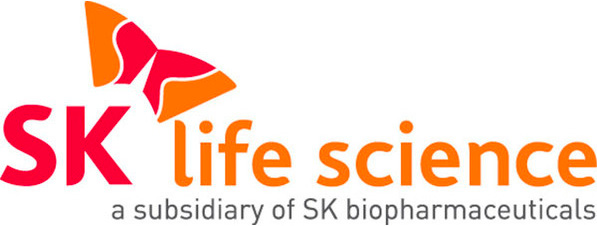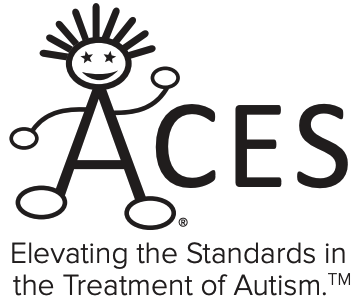August 22, 2021
Arizona Daily Sun
Sam McManis
So intent was Eric Hermon on the task at hand — head bent so low over the jigsaw puzzle it was as if his mask was weighing him down — that he didn’t notice who had come up behind him and started gently patting him between his jutting shoulder blades.
“Hey, Eric,” a familiar voice chirped.
It took a moment, but when Hermon turned around in this activity room at Hozhoni, his eyes lit up with recognition. Standing there was his older sister, Monica Attridge, who also happens to be the CEO of the Hozhoni Foundation, celebrating its 50th year of providing residential, vocational and educational services for people with severe cognitive disabilities, autism, epilepsy and cerebral palsy.
Brother and sister communicated without saying a word. A glance. A nod. A gesture. Hard to tell, because they were wearing masks, but it's safe to assume both were smiling.
There is a personal connection for Attridge, who has run operations at the nonprofit corporation that teams with the state’s Department of Developmental Disabilities for the past six years. Eric has severe degenerative epilepsy and, as a child, developed encephalitis after contracting the measles, and his cognitive impairment is such that he is unable to live independently. Attridge is Eric’s guardian, and he lives in a Hozhoni group home and is a regular at the foundation’s day programs.
But, really, Attridge and her bare bones staff are providing a lifeline and a chance at a semblance of independent living for the more than 100 clients they serve.
You can see, from the reaction as Attridge and her chief operating officer Lex Heerding received as make the rounds, that their often-difficult work is appreciated by the people in Flagstaff they serve.
In the art room, Attridge chatted up Ed, who had a stack of watercolor paintings strewn across his work table, a kaleidoscope of both figurative and abstract images.
“Is that blood coming out of the lion’s mouth?” Attridge asked him. “Oh, my.”
Ed absolutely cackles, nods vigorously.
And then there was Genevieve over in the corner, painstakingly threading embroidery, and there was Jeff, immersed in a weaving project. Across the way in another room sat Roger, wheelchair-bound but full of life. He wore his Arizona Cardinals ball cap jauntily askew and was playing with toy cars and trucks. When he eyed Attridge approaching, he pointed a crooked finger at her playfully and barked a greeting.
“Let me tell you about Roger,” Heerding said, out of earshot. “He was kind of dropped off in a nursing home. This was 15 years ago. He was bed ridden, just laid out flat. Spent all his time just lying there. We brought him here. He’s in a wheelchair now, but he’s verbal and very active. He’s engaged. He’s a favorite among the clients. Stories like that are great. It’s why we’re here.”
Stories such as that, and sights such as clients interacting (masked and socially distanced, of course) and being productive, shows Hozhoni’s worth to the Flagstaff community and society writ large. Its fundraising gala-cum-celebration will be a testament to its longevity through recession and state budget cuts, layoffs and restructuring, and through the COVID-19 pandemic that hit hard.
The foundation’s very name, taken from Navajo for “beauty and sense of harmony and balance,” suggests a better life for vulnerable people who, in an earlier era, would have been housed in state-run institutions. And, until the 1970s, when Hozhoni formed by parents of intellectually and developmentally disabled children and adults on area reservations, life looked bleak for this oft-forgotten segment of the population.
“Before the ‘70s, there were four big institutions in Arizona,” Attridge said. “And they were horrible. The institution at Coolidge was originally designed for 600 people and, at some point they had 1,200, people there. I mean, (they were) lining people up and hosing them down. It was horrible.”
50 years ago, a new way to help
Hozhoni began in January 1971 as an alternative, headquartered in a small building on the grounds of Flagstaff’s Shepherd of the Hills Lutheran Church, offering family services programs and several group homes and, by the late 1970s, vocational training.
The turning point for Hozhoni and other nonprofit private organizations sprouting to deal with the crisis of the adult developmentally disabled population came in 1977 when a group filed suit against the State of Arizona for crowded and “inhumane” conditions at Coolidge and other state-run institutions. A court ruled the state needed to find shelter for residents in or near their home communities. The state began contracting with nonprofit group homes, which received funding through the state and federal Medicaid reimbursement.
What that meant for Hozhoni was a dizzying expansion. It moved its offices first to the old Emerson School site, expanded into group homes, and added satellite facilities in Prescott. Over the years, as it has grown, Hozhoni has moved its headquarters from Riordan Road to Fourth Street and Rose Avenue before finally settling into its current location on North Walgreen Street on Flagstaff’s eastside.
Its current home allows Hozhoni to expand its reach and offerings to its clients. There is space for training, such as the year-long “Transition to Employment” vocational classrooms, as well as a therapeutic gardens and a host of therapeutic art programs. In 2007, dedicated art studios and the Hozhoni Art Gallery opened, showcasing work from clients such as Rob Zappanti, who has sold many of his paintings and been featured at galleries.
During that period of the early 2000s, the foundation reached a high point of 29 group homes and 147 adult clients in its programs.
But with the growth came an increase in operating budget. And when the Great Recession of 2008-09 hit, and the state made deep budget cuts, Hozhoni saw its funding reduced significantly. Whereas provider agencies had bene reimbursed at
Dealing with state budget cuts
100% of the actuarially determined costs prior to the recession, those agencies, including Hozhoni, saw 15% shorn away. By 2016, agencies’ reimbursement rate hovered between 72% to 78%.
The state belt tightening has only slightly slackened in the years since. Attridge said, through legislative advocates such as Sen. Nancy Barto and former Sen. Sylvia Allen, part of the funding has been restored. Still, it’s been a struggle, made more difficult, Attridge said, by Flagstaff voting in a $15 minimum wage and by the loss of revenue and services during COVID.
“We’ve made major cuts several years ago, which have been sustained,” Attridge said. “And those hurt. We used to have a director of programs. Instead, we have Lex, who is the chief operating officer and also the director of programs and director of human resources and employment services and in charge of Prescott.
“We’ve cut a lot of (administrative staff) and, in our day program, it used to be one (employee) to every three clients. Now, it’s one to four. We have not reduced staff in the group home. We used to be able to pay above minimum wage, but can’t do that now. Mostly, we’ve absorbed (the budget shortfall). We’ve cut down on office supplies. We printed out paper on both sides. There’s a joke that we ration paper clips around here.”
Currently, Hozhoni has about 30 vacant caregiver positions, actually an improvement over 2016, when the chronic shortage numbered more than 50 out of 200 spots. Attridge said Hozhoni remains 20% underfunded.
Its financial woes are significant and enduring, but so, too, is Hozhoni’s commitment to maintain services for clients.
“Our overarching philosophy,” Attridge said, “is to look at the whole person and try to meet their physical needs and mental health needs, their desires and wishes.”
It's all about the clients
To that end, programs suspended during the height of the initial COVID shutdown -- gardening, cooking, yoga, fine arts -- have been steadily reintroduced. Day trips have yet to be brought back, though, and Attridge said pandemic protocols such as masking and social distancing remain in place.
“Our clients know how to adapt quickly,” Heerding said. “They may have 20 different people in a year in their lives, so they get it.”
Heerding has been at Hozhoni for 27 years, starting when he was in high school. He could have left numerous times for career-enhancement opportunities. But he stays. It’s personal, he says.
“Every single client here I’ve known since high school, their lives are so much better,” Heerding said. “There’s a lot of client choices in what they get to do, where to go and what they eat. It’s all client-driven and I think that makes all the difference. Look at Rob, the artist. His life is so much better now.”
For Attridge, the connection is even more personal, given her connection to her brother Eric. She started her career as a Certified Public Accountant and worked in finance for years, but service for the developmentally disabled was never far from her mind.
Her late mother, Bev Hermon, was in the Arizona legislature for 12 years, first as a representative and then as a senator from the Tempe area, before starting a firm lobbying on behalf of groups such as the Arizona Consortium for Children with Chronic Illness and the Arizona Association of Providers for People with Disabilities. Monica worked for her mother’s organization before accepting the CEO position at Hozhoni in 2015.
What Attridge has done in her six years has gone beyond keeping the foundation financially afloat. She’s tried to raise the visibility of Hozhoni and, concomitantly, the plight of intellectually and physically disabled adults.
“Hozhoni tried to run under the radar for a long time,” Attridge said. “Just blend in. Don’t make any waves. Times were different then. There was more of a stigma. People (with disabilities) weren’t accepted as much.”
Heerding is blunter: “Some people didn’t want (group homes) in their neighborhoods. Still, to this day, you’ll find some bigotry. It’s an education opportunity for us.”
“But it’s getting better,” Attridge said. “Society’s much more accepting now. Our (50th) celebration, it’s about community awareness. It’s about celebrating who we are.”














